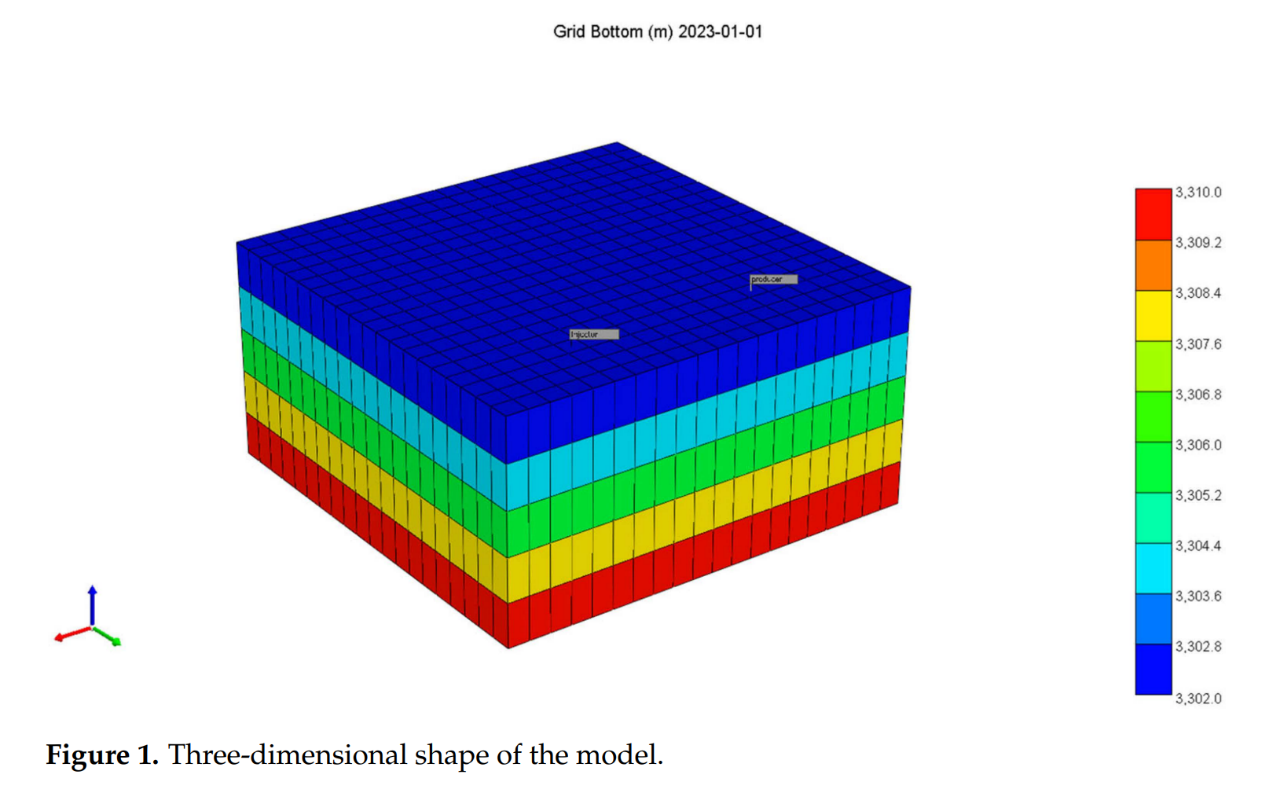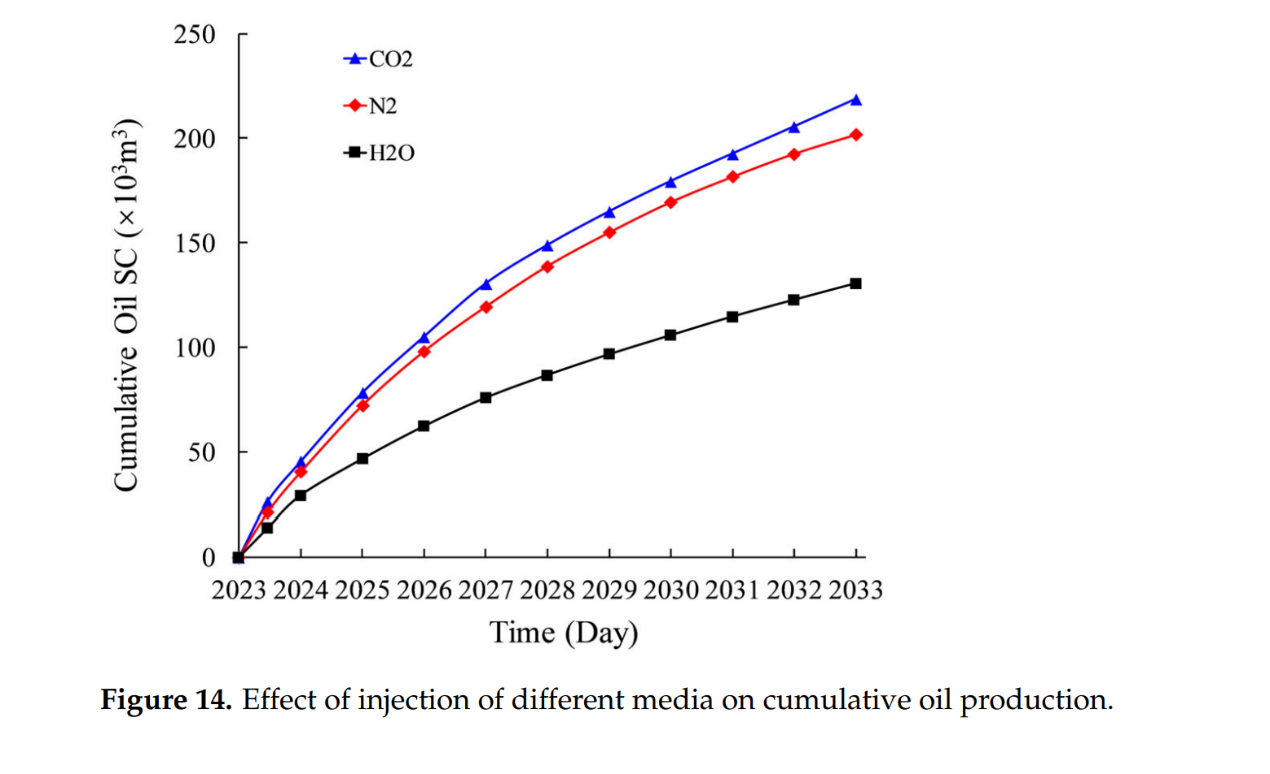Numerical Simulation Study on Optimization of Development Parameters of Condensate Gas Reservoirs
由于凝析气田开发过程中存在反凝析现象,流体相变复杂,准确描述其流动特性和残余油气开采分布特征变得尤为困难。因此,选择开发方案及后续动态调整以实现凝析气田的高效、合理和可持续开发也变得极具挑战性。
本文明确了凝析气田的相态特征,利用计算机模拟创建了基本流体模型,并针对目标凝析气田的特点,应用CMG(Computer Modeling Group)数值模拟方法,研究了油层厚度、渗透率、孔隙度、岩石压缩系数、垂向渗透率与水平渗透率比值以及不同注入介质等六个因素对开发效果的影响,旨在为实际生产中凝析气田的合理开发提供指导。
CMG软件应用情况
本文使用CMG软件(2021版本)建立凝析气田数值模型,应用其GEM模型,使用WinProp软件创建基本流体模型。通过调整Peng-Robinson状态方程和EoS参数,使流体相模型与实际凝析气田的PVT数据匹配。模型中共2000个网格块,初始压力34473.8 Kpa,初始温度124.4°C。研究了油层厚度、渗透率等六个因素对凝析气田开发效果的影响,重点分析不同参数下累计产油量、累计产气量和日产油量的变化。
结论
- 在凝析气田的衰竭开发过程中,分析了油层厚度、渗透率、孔隙度、岩石压缩性以及垂向渗透率和水平渗透率比值等参数对凝析气田开发的影响。通过对比这些参数对累计油产量的影响,发现改变渗透率对累计油产量的变化影响最大,其次是孔隙度。
- 通过改变地层能量,分析了不同介质注入对凝析气田开发的影响。二氧化碳在超临界状态下具有独特的物理性质,注入地层后会产生明显的重力分异作用,能抑制边底水、促进低位储层产出,因此二氧化碳注入的开采效果最佳。氮气具有良好的膨胀性和较高的压缩系数,能有效补充地层能量、保持储层压力,但由于其密度低且易产生重力分异,注入后的粘度相对较小,效果不如二氧化碳。此外,注水会降低累计油产量,因此在开发中不建议使用水作为注入介质。
作者单位
中国地质大学(北京)能源资源学院



Abstract
Due to the retrograde condensation phenomenon in the development process, the fluid phase change is complex, and it becomes particularly difficult to accurately describe the fluid flow characteristics and residual oil and gas distribution characteristics during the development of condensate gas reservoirs. It is difficult to select the development program and subsequent dynamic adjustment for the efficient, reasonable, and sustainable development of condensate gas reservoirs. In this paper, the phase characteristics of condensate gas reservoirs are clarified; the basic fluid model is created by using computer modeling, using Win-Prop; and in view of the characteristics of the target condensate gas reservoirs, the CMG (Computer Modeling Group) numerical simulation method is applied to study the effects of six factors, the thickness of the reservoir, permeability, porosity, rock compression coefficient, the ratio of the vertical permeability to the horizontal permeability, and the injection of different media, on the development effect through the study of different development parameters of gas condensate reservoirs. The purpose of this study is to provide guidance for the rational development of condensate gas reservoirs in practical production.
Keywords
condensate gas reservoir; CMG numerical simulation; influencing factors; recovery rate; exhaustion development
